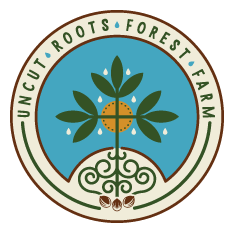
Kollyva.
For humankind, the Resurrection of the dead at the Second Coming of Christ is imminent. The Orthodox Christian faithful strive to live their lives in anticipation of it. When the physical body dies, the soul continues to live and is simply separated from the body until the time when it is reunited in the Resurrection. In the words of St. Paul, “what you sow is not made alive unless it dies” (I Corinthians 15:36).
Kollyva, which is prepared in memory of the departed, is symbolic that which is sown and comes back to life. To be precise, it represents the hope of the Resurrection itself. When a grain of wheat is planted in the earth as if being buried, it regenerates and springs to life from its dormancy. In its growth, it then bears much more grain than the original seed alone was able to offer. In the Gospel of John we read, “unless a grain of wheat falls into the ground and dies, it remains alone; but if it dies, it produces much grain” (John 12:24).
Most recipes for kollyva call for boiled wheat berries (or rice in some instances) that are then heavily sweetened and then covered with powdered sugar. Most everyone I know nowadays (including myself) has some form of sensitivity to modern wheat, as it is quite challenging to digest. In addition, we all know that refined sugar isn’t so great for us. My solution to this problem is quite simple. This is where the ancient grain einkorn comes in and the well-known boiled Acer species’ tree sap, maple syrup.
Sprouting the einkorn berries prior to cooking makes them even more digestible, plus it then takes them less time to cook. The recipe I have to offer here is one that is not only delicious, but also good for you. You will need to begin soaking the einkorn berries a day in advance of when you plan to actually make the kollyva, so plan on allotting additional time for this step (approximately 24 hours).

Cooked einkorn berries.
Sprouting the einkorn berries prior to cooking makes them even more digestible, plus it then takes them less time to cook. The recipe I have to offer here is one that is not only delicious, but also good for you. You will need to begin soaking the einkorn berries a day in advance of when you plan to actually make the kollyva, so plan on allotting additional time for this step (approximately 24 hours).
Ingredients:
4 c einkorn berries
1 c crushed pecans
1/2 c maple syrup
Seeds of one large pomegranate, reserve 1/4 c.
1/2 tsp fresh orange zest, packed
1 tsp cinnamon
1/4 tsp vanilla powder
1/4 tsp unrefined fine sea salt
Dried currants, halved pecans, and the reserved 1/4 c of pomegranate seeds can be used for decorating the top of the finished kollyva
Directions:
Place einkorn berries in a large bowl and cover with several inches of water. Let soak overnight or for at least 8 hours. Drain the berries and place them in a colander to begin to sprout, stirring every couple of hours. When a tiny white “tail” is seen on the berries, you will know that they have sprouted.
Place sprouted berries in a large pot and fill it with water, enough to cover the berries by at least 3-4 inches. Bring the pot to a boil and then place heat on low, simmering until the berries are soft and easily chewed, approximately 30-45 minutes. It is best to begin checking the simmering berries at around the 30 minute mark to see if they’re tender.
Once the berries are cooked, drain them and then let them cool to room temperature. Once cool, add all of the remaining ingredients (remembering to set aside 1/4 c of pomegranate seeds for decorating), being sure to incorporate them all in very well.
Place the finished kollyva in a beautiful bowl and decorate the top.

Kollyva decorated with a border of pecans and pomegranate seeds, and a cross composed of dried currants.










